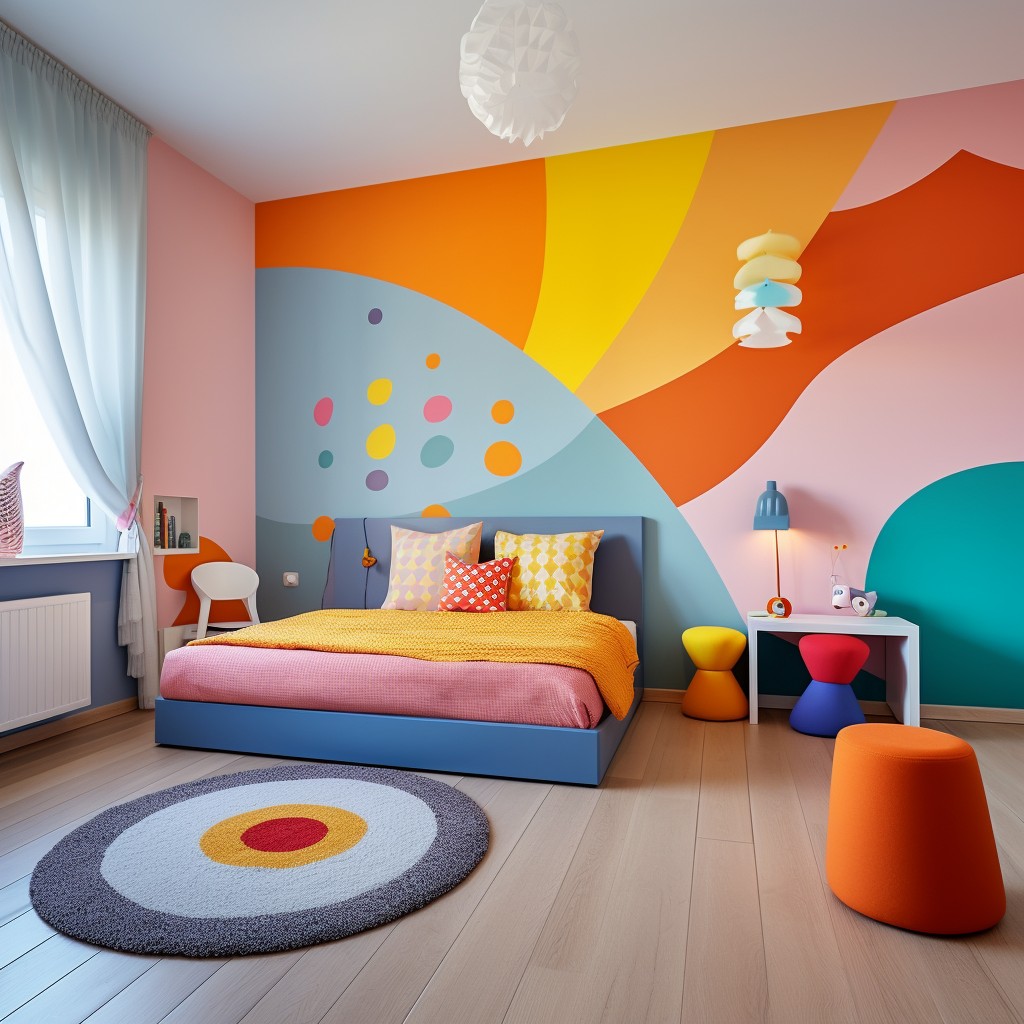Decorating a room with the right paint design can completely alter its ambiance and functionality. Whether you’re aiming for a calm retreat or a lively entertainment space, the right choice can make all the difference. In my personal journey of home decoration, I discovered that painting is not just about choosing a color; it’s an art form that can express your personality and style.
Understanding Room Decoration Painting Designs
Room decoration painting designs encompass various styles, techniques, and color palettes that can dramatically change how a space feels and looks. From bold statement walls to subtle color washes, the options are virtually limitless.
Popular Painting Techniques
- Solid Color Walls: Traditional yet effective, solid colors can provide a strong foundation for any room.
- Accent Walls: A bold, different color on one wall can create a focal point in the room.
- Stripes: Adding horizontal or vertical stripes can make a room appear taller or wider.
- Ombre: This gradient effect creates a soft transition between two colors, adding depth.
- Stenciling: This method allows for intricate designs and patterns, bringing unique artistic flair.
- Sponging and Rag Rolling: These techniques give texture and depth, perfect for adding a subtle touch.
Choosing the Right Colors for Your Space
The colors you choose are crucial as they can influence mood, energy, and even productivity. In my experience, the hues you select should reflect your style while considering the room’s purpose.
Color Psychology
| Color | Psychological Effect | Best Rooms |
|---|---|---|
| Blue | Calming and serene | Bedroom, Office |
| Yellow | Cheerful and energetic | Kitchen, Living Room |
| Red | Passionate and dynamic | Dining Room, Exercise Room |
| Green | Refreshing and natural | Living Room, Bedroom |
| Gray | Neutral and balanced | All Rooms |

Inspiring Paint Design Ideas
Below are some creative ideas that you can consider implementing in your next room makeover.
Minimalist Designs
Opting for a clean, white or light-colored palette can enhance the space’s openness.

Tips for Minimalist Painting
- Use one or two colors throughout the space.
- Incorporate varying textures through furnishings.
- Keep wall art simple and understated.
Vibrant Accent Walls
Choose a bold color or striking wallpaper for one wall to create visual interest.

Cons of Accent Walls
- May overwhelm small spaces.
- Can be trendy, which may not last.
Textured Paint Finishes
Using textured paint can add dimension and character to your walls.

Pros of Textured Paint Finishes
- Hides imperfections effectively.
- Adds depth and interest to plain walls.
Painting Tips and Tricks
Once you’ve chosen a design and color scheme, it’s important to execute it correctly. Here are several tips that I’ve learned through experience:

Preparation is Key
Before you start painting, ensure that you adequately prepare the room. Move furniture, cover the floors, and tape off edges to achieve clean lines.
Choosing the Right Tools
Invest in high-quality brushes and rollers. They can make a significant difference in the final finish.

Patience and Drying Time
Give each coat sufficient time to dry before applying another. Rushing can lead to a mess!
Final Steps to Consider
After painting, don’t neglect these finishing touches:

Redecorating with Furniture
Once your walls are painted and dry, think about how new furniture or re-arranging existing pieces can complement your new color scheme.
Adding Finishing Touches
Incorporate decorative elements like curtains, rugs, and artworks that tie the room together.
Common Mistakes to Avoid
It’s easy to make mistakes while decorating. Here are some common pitfalls to watch out for:
- Forgetting to test paint colors: Always test swatches on walls before making a commitment.
- Choosing trendy colors: While it’s tempting, trends can fade. Opt for timeless shades.
- Neglecting lighting: The way a color looks can change drastically in different lighting.
Frequently Asked Questions
What is the best paint for interior walls?
The best paint for interior walls is typically a latex or acrylic-based paint because it provides durability and ease of cleaning.
How long does it take for paint to dry?
Generally, latex paint can dry to the touch in about one hour but may take up to 30 days to cure fully.
Can I paint my wall myself?
Absolutely! With the right tools and preparation, many homeowners can successfully paint their own walls.
Should I hire a professional painter?
If you’re unsure about your skills or the scale of the job, hiring a professional can save you time and ensure quality results.
What are the trending paint colors for 2024?
Trending colors for 2024 include earthy tones, muted pastels, and rich jewel tones that create warmth and sophistication.
Conclusion
Room decoration painting designs can transform your space into a reflection of your personality and lifestyle. From understanding various techniques to choosing the right colors and executing the paint job flawlessly, the journey can be immensely rewarding. Embrace the creativity that comes with decorating and let your walls tell your unique story!